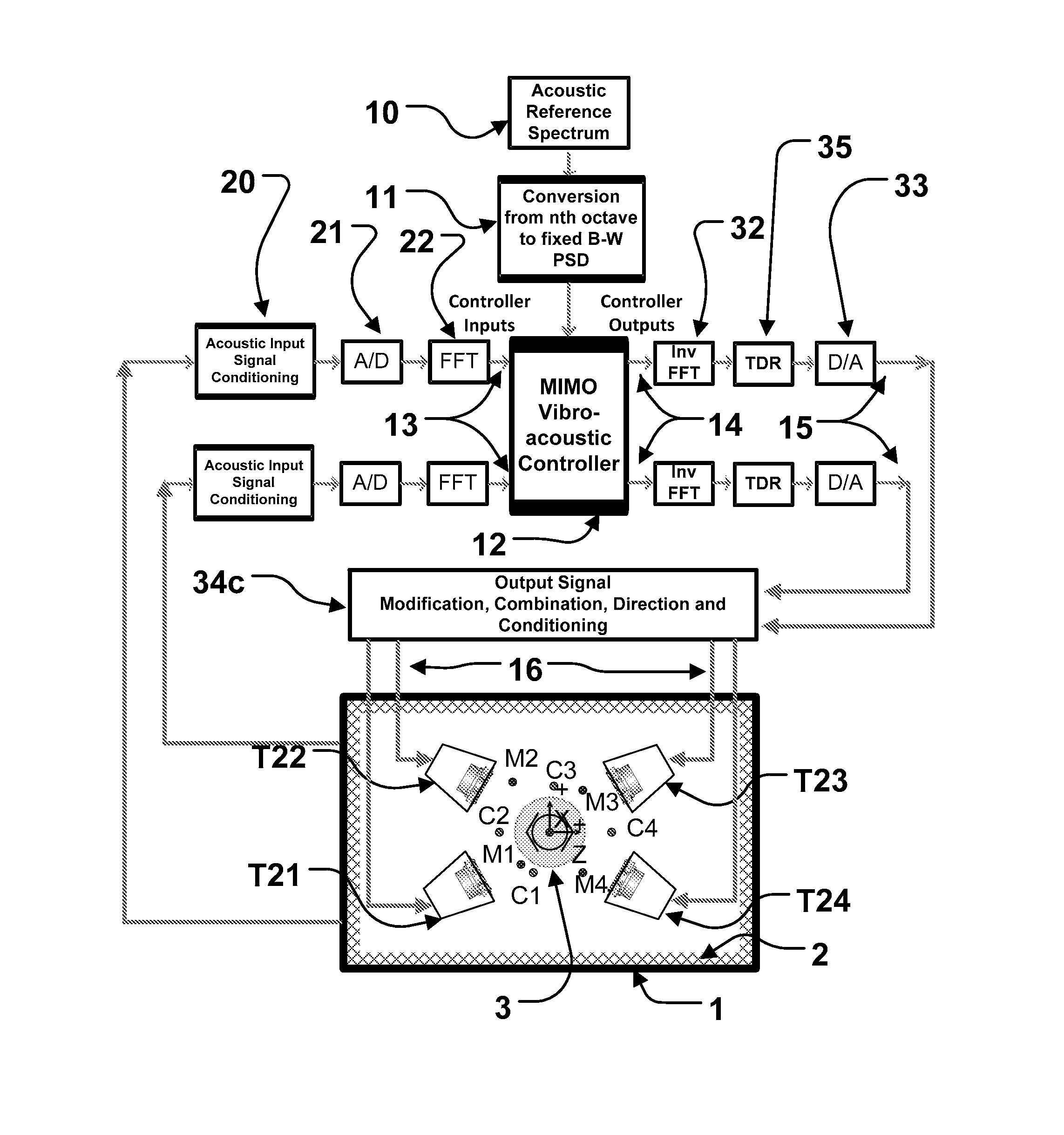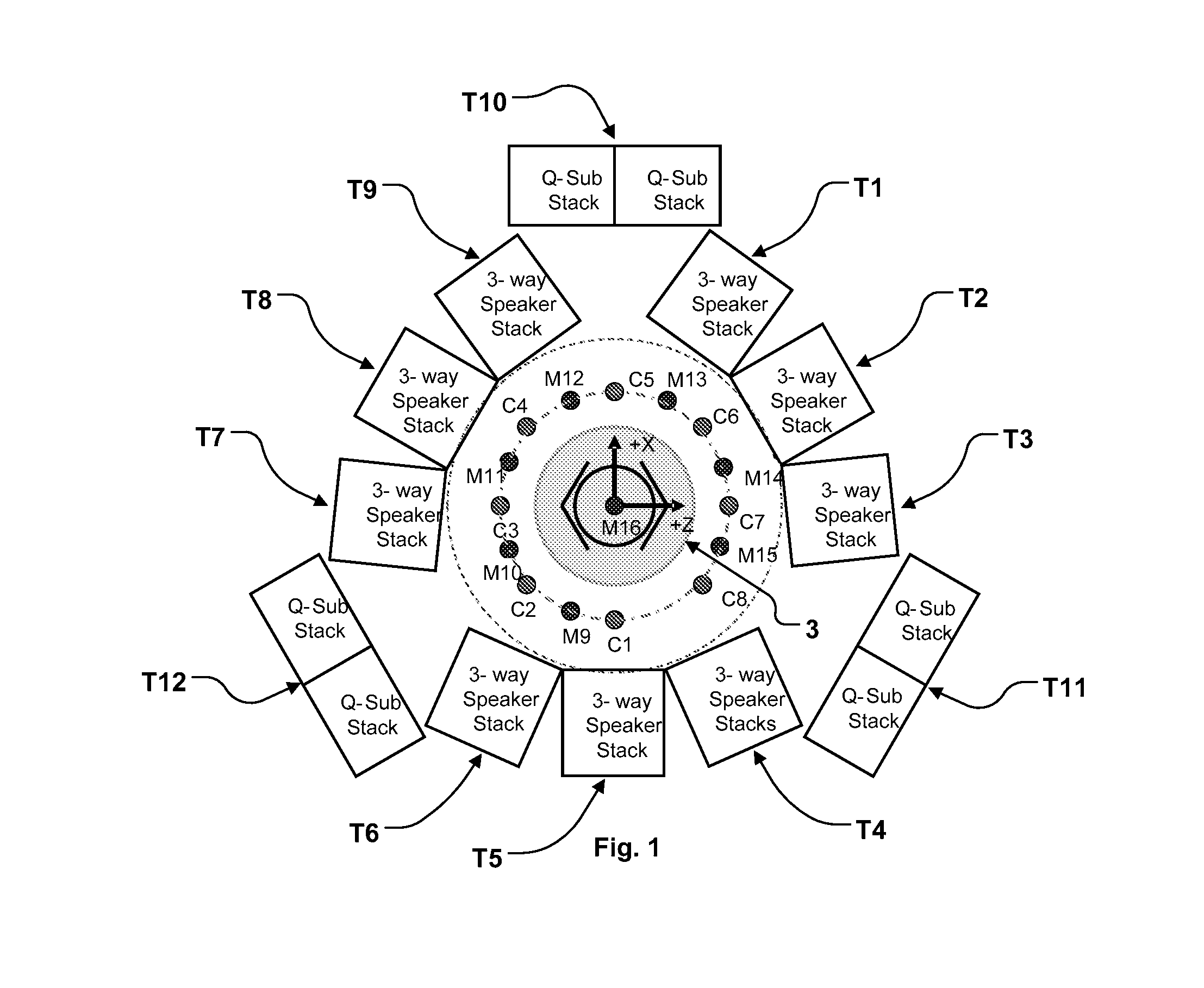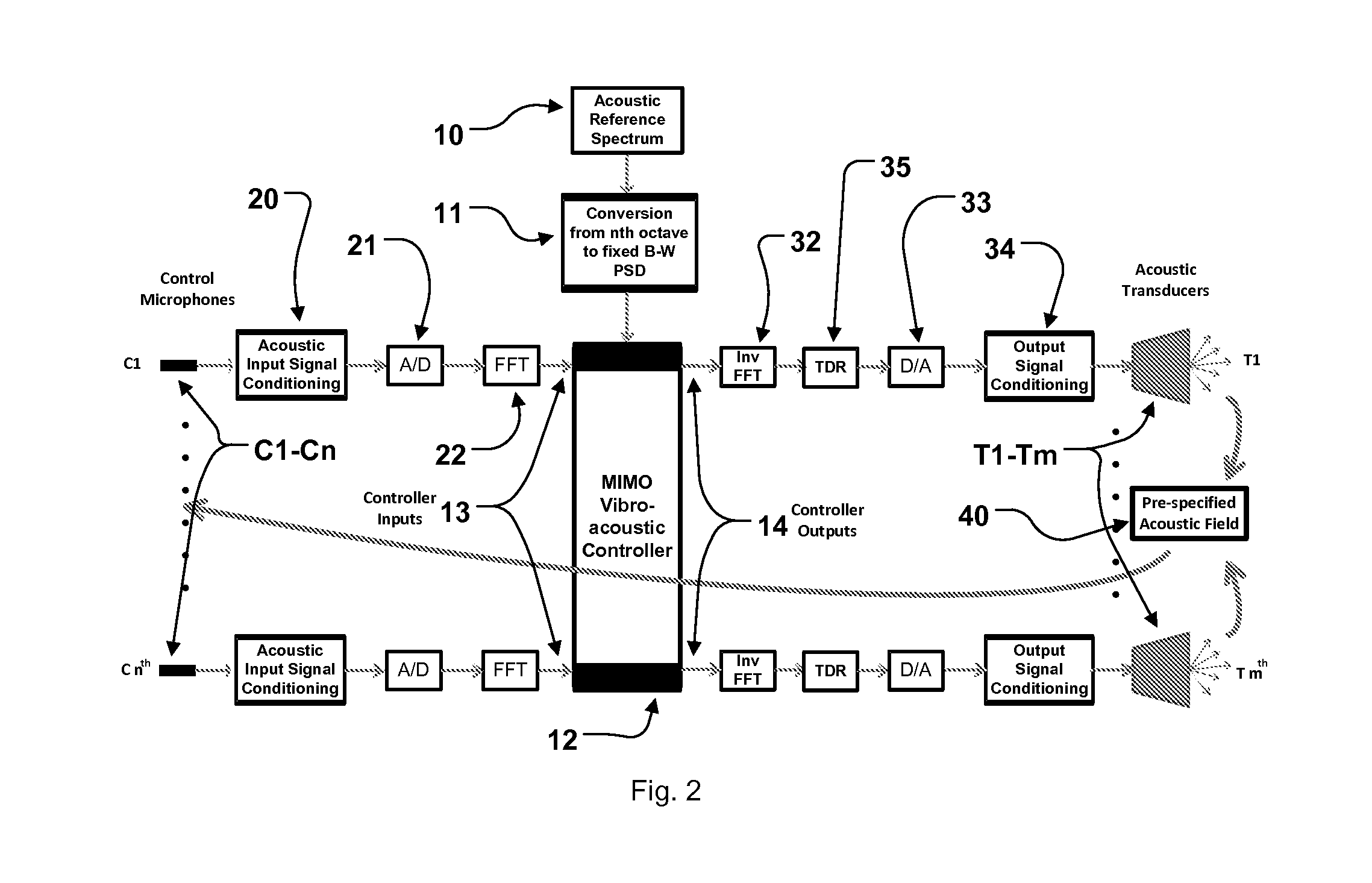Direct field acoustic testing in a semi-reverberant enclosure
a semi-reverberant enclosure and acoustic testing technology, applied in the field of vibration testing, can solve the problems of increasing the risk of failure of input power, reducing the amount of testing, and requiring substantial cost and effort to transport, deploy and tear down
- Summary
- Abstract
- Description
- Claims
- Application Information
AI Technical Summary
Benefits of technology
Problems solved by technology
Method used
Image
Examples
Embodiment Construction
[0018]Embodiments hereof are now described with reference to the figures in which like reference characters / numbers indicate identical or functionally similar elements. While specific configurations and arrangements are discussed, it should be understood that this is done for illustrative purposes only. A person skilled in the relevant art will recognize that other configurations and arrangements can be used without departing from the spirit and scope of the invention.
[0019]Referring to FIG. 1, an embodiment of a DFAT system in accordance with co-pending U.S. application Ser. No. 13 / 117,870, filed May 27, 2011 (“the '870 application) is shown. Included is a transducer array composed of electro-dynamic acoustic sources or transducers T1-T12 covering various frequency ranges arrayed around the unit-under test (UUT) 3 in a generally circular arrangement as shown. The transducer array in the embodiment shown is composed of twelve groups T1-T12 of eight transducers, of which nine groups ...
PUM
| Property | Measurement | Unit |
|---|---|---|
| internal volume | aaaaa | aaaaa |
| internal volume | aaaaa | aaaaa |
| frequency | aaaaa | aaaaa |
Abstract
Description
Claims
Application Information
 Login to View More
Login to View More - R&D
- Intellectual Property
- Life Sciences
- Materials
- Tech Scout
- Unparalleled Data Quality
- Higher Quality Content
- 60% Fewer Hallucinations
Browse by: Latest US Patents, China's latest patents, Technical Efficacy Thesaurus, Application Domain, Technology Topic, Popular Technical Reports.
© 2025 PatSnap. All rights reserved.Legal|Privacy policy|Modern Slavery Act Transparency Statement|Sitemap|About US| Contact US: help@patsnap.com



